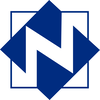|
Great news! Wisconsin is one of the newest additions to the Digital Public Library of America’s growing roster of partners. The Digital Public Library of America (DPLA,http://dp.la) brings together the riches of America’s libraries, archives and museums and makes them freely available to the world. (Ann's full post...) I use Excel spreadsheets to manage projects. Sometimes when the spreadsheets get big and the cells have a lot of information in them, they end up with empty space at the top of a cell. I wished for an easy way to clean this up and there is one! Here is how you fix it. (Vicki's full post...)
Check out the classified ads on the DPI website: https://plus.google.com/communities/112918125734942249783. It may not be all that techie but I thought it would be helpful! :)
 As more and more of you realize how important it is to backup your data, you are bound to purchase a flash/thumb drive or an external hard drive. These devices are also a great way to carry your files around with you and/or move them from one computer to another. However, not many people realize that they have a surprisingly short life span. Not to mention, if you remove the USB cable improperly from your computer, you might corrupt your data or make the drive inaccessible. Every form of storage, from the old cassette tapes to CDs to your computer's hard drive, has a finite lifespan - meaning they can only "do their thing" so many times before wearing out. Here is a great article describing storage media and how long each type is "supposed" to last. Flash drives and hard drives (to which my posting is referring) are at the bottom of the article. When you plug in any USB storage, a USB icon appears in the Notification Area, a.k.a. System Tray (lower right corner of your screen by the time/date). It may be set to be hidden, in which case you click on the little white triangle at the left to see it. The icon is supposed to be the end of a USB cable overlaid with a white check mark in a green circle. All you have to do is click on this once and then select the device you want to remove. It will say something like, "Eject [name of device]". Within a couple seconds a message will appear saying, "Safe To Remove Hardware". At this point you can pull out the cable or flash drive and be on your way. Do this every time and your drive may last longer than expected. I want to clear up any confusion/misinformation surrounding the security aspects of SAM and Deep Freeze, as well as give you our (NFLS/OWLSnet) official recommendation for patrons logging out of SAM. Hopefully this will get everyone on the same page and allow for the most efficient use of your public computers.
The creators of the SAM software have informed us that the only two things SAM does when a patron logs out are: 1) close any open programs; 2) clear the browsing history/cache of Internet Explorer. This means that any data/files a patron downloaded to the computer will remain on the computer unless they delete it and then empty the Recylcle Bin (aka: Trash). Also, if a library puts another browser (i.e. Chrome) on a public computer, that browsing history will not be cleared. For those who do not know, the Deep Freeze software is the one that clears everything upon a reboot/shutdown, returning the computer to it original and clean condition (meaning, how I configured it in my office before any patrons touched it). Thus, every night when the computers are turned off, they are wiped clean of that day's activity. It would seem like the safest thing would be to reboot the PCs after every patron; however, there are complications. SAM was created to run continuously in order to maintain an accurate and efficient schedule. Every time a SAM-controlled computer reboots, there is a chance that it will not re-establish proper communications with the SAM Activity Manager/SignUp Station. If this happens, the schedule can get jumbled and a patron my have to wait an extra 30 minutes. Often times, it also requires staff and Tech Support to get involved, like when I have to correct those "PC IS DOWN" messages. Lastly, there is the actual time it takes to reboot the machine, which is especially cumbersome when patrons are waiting. Due to all of the potential problems rebooting could cause, we recommend that the patrons not reboot the computer after use; they will need to be responsible for cleaning up any of their personal data/history. Bruce Smith (WiLS) announced this morning that periodicals are now available on WPLC OverDrive. This is from his email:
Periodicals are now live in the collection! You can see them at http://dbooks.wplc.info/AllPeriodicals.htm. If you have support requests, please refer to the FAQ at http://wplc.info/sites/wplc.info/files/training/Support%20for%20OverDrive%20Periodicals.pdf. There is also a link to the OverDrive Help section on Periodicals in the banner at the top of the digital library website. Please take a moment to familiarize yourself with the information in the links above, especially the FAQ. As an example, periodicals are in the NOOK format. However, you can still access the material without a NOOK by downloading the NOOK Reading app to your Android, iPhone, iPad, or Windows 8 device. Check-out the NetworkNews posting here: https://owlsnet.org/owlsnet/network-news |
AuthorJohn's collection of tech tips, trends, and training for NFLS librarians Click to set custom HTML
Archives
December 2018
|
|

 RSS Feed
RSS Feed
